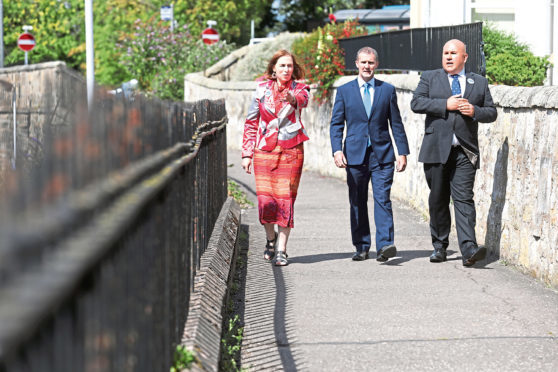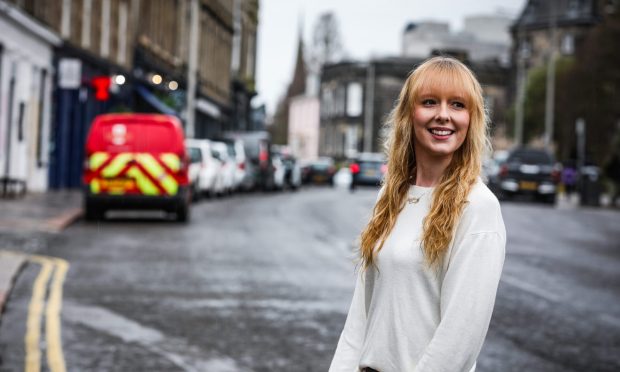Sir, – News of the Scottish Government’s rail development fund awards announced in St Andrews on Thursday strikes me as a classic case of the authorities pretending to do something with little intention of following through.
There is no harm in supporting local campaigns around the country to take forward their proposals but whether this investment benefits any other than transport consultants, let alone leads eventually to any meaningful re-opening of stations or lines, must be seriously questioned.
Take the sore example of Levenmouth where there are five and half miles of mothballed line in place, already owned by Network Rail.
It is the largest urban area in Scotland with no rail link.
The line could be easily and quickly reconnected to the national network for £50 million.
I am aware of three major Levenmouth transport studies conducted in the past decade with, incredibly, a fourth now in progress.
All have shown a very positive case for re-opening direct rail services to Edinburgh, by extending the Fife Circle.
Yet no government decision to extend any rail services has been made since 2006 .
So what hope do other projects which already face greater obstacles or weaker cases have?
I fear this latest fund is mere tokenism and a delaying tactic to quieten campaigners.
What is needed is a clear policy to reconnect significant communities.
Ken Maclagan.
2 Union Place,
Leven.
We must make up the rules
Sir, – Boris Johnson may be regarded by some as a buffoon, but he does speak perfect sense regarding the wearing of the burka in this country.
I remember going to Malta years ago and as an observance to their Catholicism the women entering churches wore a head-dress and the men wore long trousers, obviously respecting that country’s culture.
British people travelling further afield also respect the laws of the country they are visiting, so why are we continually dictated to, in our own country, by other religions?
A bus driver I know was presented with a particularly difficult situation when one of these “letter boxes”got on to his bus with a bus pass.
How on earth was he supposed to identify the person under the veil?
When we complain regarding this situation we are subjected to abuse (yes, surprise surprise, it works both ways).
It is about time that we ensure that this country lays down the law on what is acceptable regarding other cultures, and not rely on them telling us what to do.
Eric Travers.
38 Gellatly Road,
Dunfermline.
Nobody dares to speak out
Sir, – I can agree with virtually every word of Iain G Richmond’s letter (August 11) except where he writes that: “Ultimately the choice to wear or not wear a burka rests with the individual” – as expressed by Boris Johnson.
Such a choice depends upon the culture and may not be available to women in a community where events such as honour killing are known to happen.
Meanwhile, George Aimer’s letter referring to the burka story (August 11) asks: “ How did we let the PC brigade take over our country?”
This is probably related to the fact that with three million Muslims we have allowed Islam to become a political force .
Disregarding the fact that – for various reasons – the burka is offensive to many, even the mighty Boris dare not go as far as to call for it to be banned.
Meanwhile, Scottish Conservative leader Ruth Davidson ridiculously and ignorantly compares it to the wearing of a crucifix – such is the clout of minority political power in these snowflake days.
Andrew Lawson.
9 MacLaren Gardens,
Dundee.
Farmers cannot go back in time
Sir, – I write in response to David Dewar’s recent letter headed “farmers also partly to blame” (July 26) apropos the shortage of foreign fruit pickers, and his proposal to fill the shortfall with our local unemployed and 16+- year-olds.
Yes, farmers are partly to blame but not in the way he suggests.
Their fault is that agriculture got too efficient too quickly, reducing the workforce to “farmer and son/daughter-only” on the vast majority of enterprises across the country.
Farmers got out of the habit of managing a workforce and to now ask them to manage a squad of people who, in a lot of cases, would be reluctant employees would be a step too far without the appropriate training or support.
Mr Dewar’s idea will be on the lips of a massive proportion of the population, brexiteers or otherwise, and indeed I myself have sympathy for it.
However, as someone who has managed people from team leader to factory manager, I can think of nothing more stressful than trying to get product to the farm gate within deadlines and stringent quality criteria with a rag-tag and bobtail workforce.
The high level of supervision required would be cost prohibitive with the farmer absorbing all of the extra cost because the processors feeding the profit hungry supermarkets would not compromise their own bottom line profitability.
It would also be too simplistic to advocate going back to the old days when “going to the berries and the tatties” was part of the way of life for many people from challenging income brackets.
The growers had manageable acreages to coincide with labour availability and the consumer demand.
Then, the consumer accepted that the produce was seasonal.
Now, the seasons for the various berries in the shops has elongated out of all proportion to meet the consumer’s new perception of what should be available to them all year round.
The farmers have invested huge sums of money to create the conditions to meet this new demand and so for them to revert to the old ways would be catastrophic.
Great idea David, but wholly impractical without some joined up co-operation at all levels from farmers to politicians.
Neil Dewar.
Emmock Farmhouse, Tealing,
Dundee.
Simple choice is required
Sir, – It should come as no surprise to read of the Rev Scott Burton’s apology to the LGBT community for the “cruelty and injustice” carried out towards it by the Church of Scotland (Courier, August 11).
When the disciples asked “…what will be the sign of your coming and of the end of the age?” (Matthew chapter 24), Jesus’ detailed response included, “…many false prophets will appear and deceive many people”.
I strongly suspect that some unbiblical teaching yet to come will prove much more subtle than this.
In fact no man, woman or child, earnestly seeking after the truth could be taken in by the Rev Burton.
On the contrary, he makes our choice all the easier: choose a church which upholds the bible as the word of God; or join an organisation which flatly denies it. Simple.
Stuart Wishart.
12 Walnut Grove,
Blairgowrie.
Desire is still very much alive
Sir, – Courier columnist Stefan Morkis asks “whether (Scottish independence) marchers do anything to advance the aim of Scottish independence or are they merely going round in circles?” (Courier, August 6).
I would suggest that what they are doing is reminding the nation that, among all the other high profile manoeuvres going on, the passion for independence smoulders still.
BBC Scotland, whether you agree or not, are considered by almost all independence supporters to be biased against them; almost all the Scottish press openly support the Union.
With support for independence running consistently, for several years, at over 40%, this is not a fair reflection of our national politics.
So how do supporters show to each other, and the nation, that they are still here, still passionate about achieving the right to run our own country?
Well, what they have been doing this year, very successfully, is getting out there, around the country in large numbers, taking their message to the people – joyously, with exemplary behaviour – that, despite claims that there is no demand for another referendum, the opposite is the case.
There is a very real and passionate desire to break away from the UK.
Les Mackay.
5 Carmichael Gardens,
Dundee.










